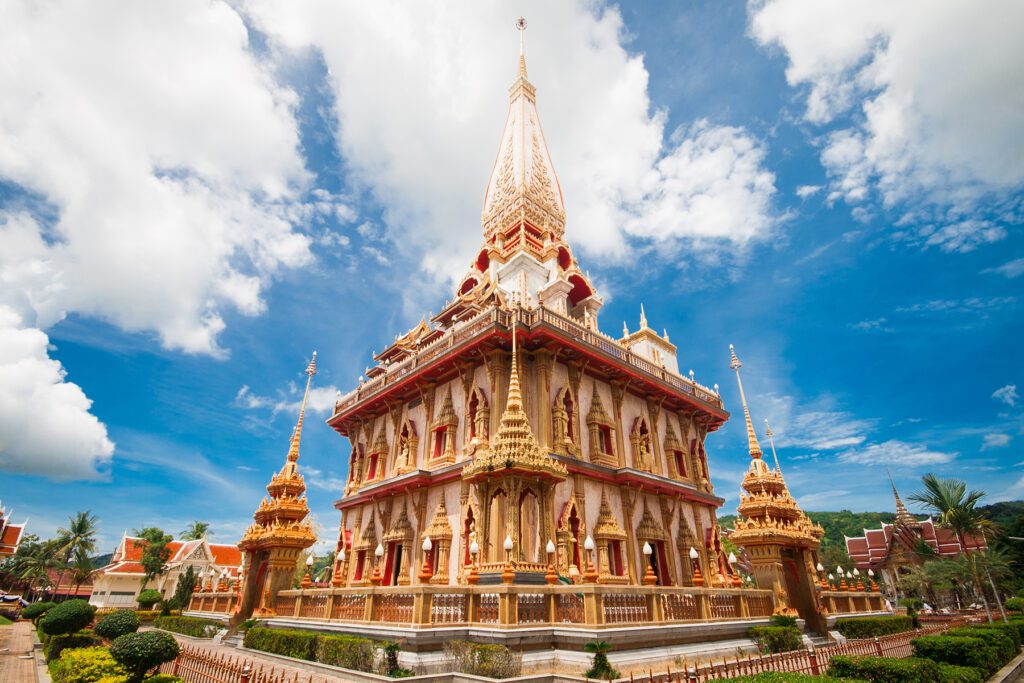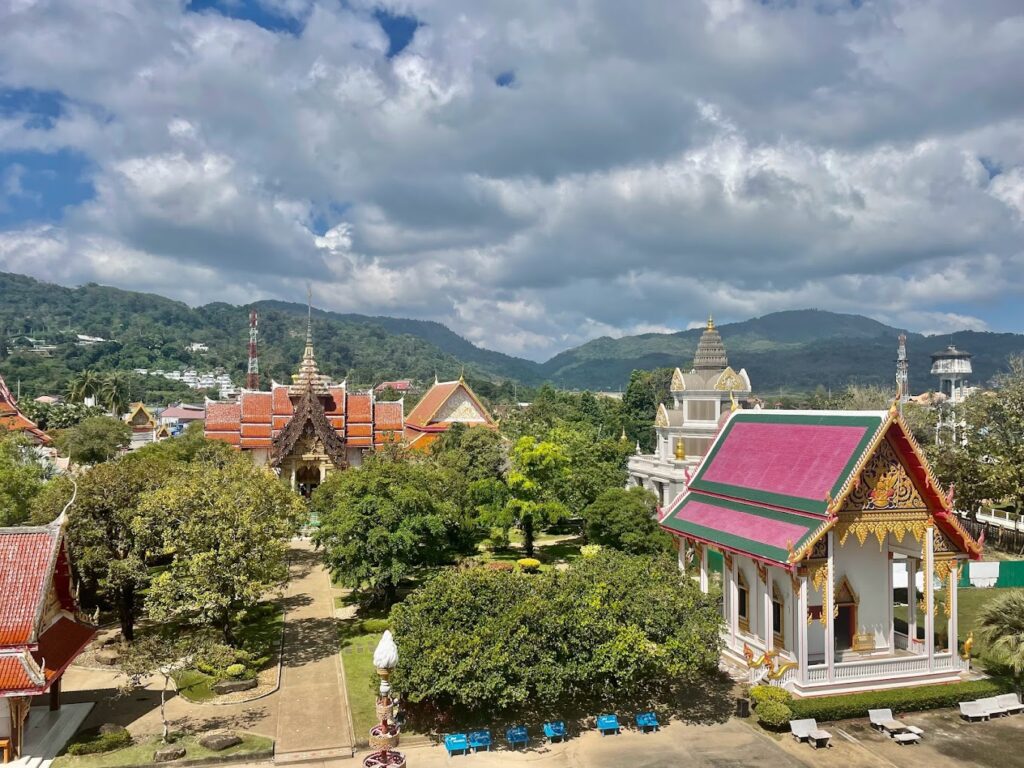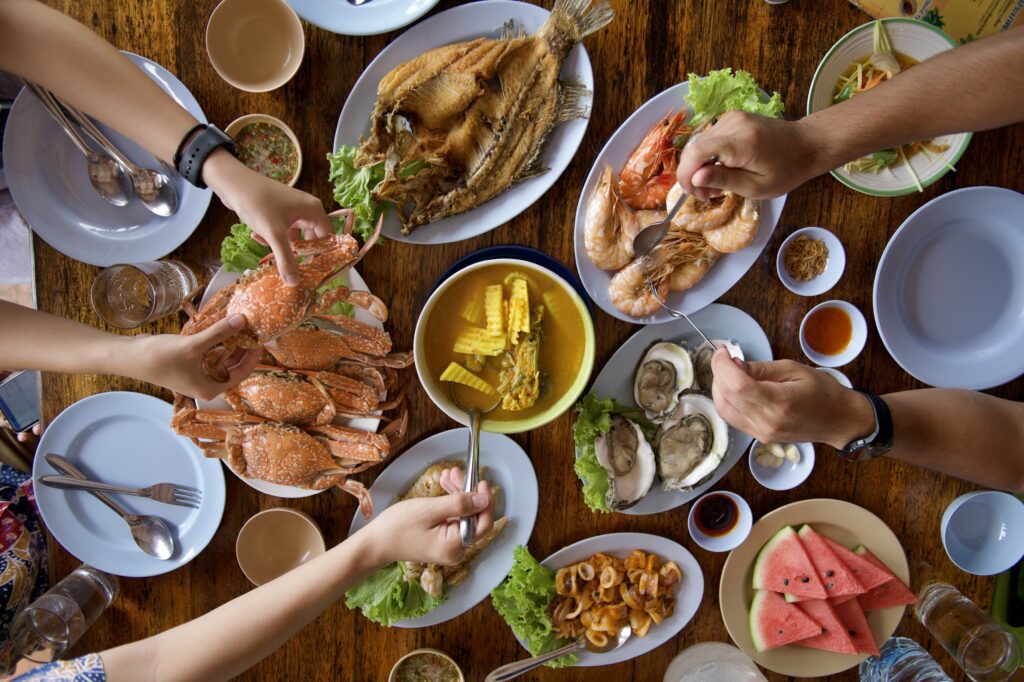

Thai Food
Thai food is a culinary treasure trove, filled with a multitude of flavors, aromas, and spices that dance on the tongue and tantalize the senses. From the creamy, rich curries to the refreshing, zesty salads, Thai cuisine is a true feast for the senses.
One of the defining features of Thai food is its balance of sweet, sour, salty, and spicy flavors. A typical Thai dish will often include a combination of these flavors, resulting in a complex and dynamic taste experience. For example, a spicy green curry may be balanced out by the sweetness of coconut milk, while a sour papaya salad may be tempered by the salty flavors of fish sauce.
Another unique aspect of Thai cuisine is the use of fresh herbs and spices. Cilantro, basil, lemongrass, and galangal are just a few of the herbs commonly used in Thai cooking, and each adds its own distinctive flavor and aroma to the dish. Additionally, Thai food often incorporates a variety of spices, such as coriander, cumin, and chili peppers, which add depth and heat to the flavors.
One of the most well-known Thai dishes is tom yum, a spicy and sour soup that is typically made with shrimp or chicken, along with a variety of vegetables and herbs. The broth is flavored with lemongrass, kaffir lime leaves, and chili peppers, giving it a bright and lively taste. Another popular dish is pad thai, a stir-fried rice noodle dish that is typically made with shrimp, tofu, or chicken, along with a mixture of vegetables and a savory sauce.
In addition to these well-known dishes, there are also many regional specialties in Thailand, each with its own unique flavors and ingredients. For example, the northern region of Thailand is known for its spicy and savory sausages, while the northeastern region is known for its spicy salads made with fermented fish.
Thai food is also often served with a variety of condiments and dips, such as peanut sauce, sweet chili sauce, and nam prik, a spicy chili paste. These condiments add an extra layer of flavor to the dish and allow diners to customize their own level of spice and flavor.
In conclusion, Thai food is a true delight for the senses, with its balance of sweet, sour, salty, and spicy flavors, as well as its use of fresh herbs and spices. From the spicy soups to the savory stir-fries, there is something for everyone to enjoy in this delicious and dynamic cuisine.
Phuket Town
Phuket Town is the capital city of Phuket Province in Thailand, and it is a vibrant and lively destination that is full of history, culture, and charm. Located on the western coast of the island of Phuket, the city is home to a diverse population of locals and expats, and it is known for its colorful streets, delicious cuisine, and bustling markets.
One of the most interesting things about Phuket Town is its history. The city was founded in the late 1800s as a major tin-mining center, and it quickly grew in wealth and importance. Today, the city is still home to a thriving tin industry, and it is also a major hub for tourism and commerce.
One of the best ways to experience Phuket Town is by exploring its colorful streets and neighborhoods. The Old Town area is particularly charming, with its narrow streets and colonial-style architecture. Here, you will find a mix of old Chinese shophouses, Thai-style temples, and modern cafes and restaurants. As you wander through the Old Town, you will also come across a number of street markets and food stalls, offering a wide range of local delicacies and souvenirs. Most famous streets are Thalang Road and Soi Romanee.
Another must-see attraction in Phuket Town is the Phuket Weekend Market, which is held every Saturday and Sunday evening (from 4pm-10pm). The market is a lively and colorful spectacle, with stalls selling everything from fresh produce and seafood to clothing, jewelry, and crafts. The market is also a great place to sample some local food, with a wide range of street food stalls serving up everything from spicy curries to sweet desserts.
If you are interested in history and culture, Phuket Town has plenty to offer. The city is home to a number of temples and shrines, including the beautiful Jui Tui Shrine, which is dedicated to the Chinese sea god, Ma Zu. The shrine is a popular place for locals to pray and make offerings, and it is also a popular spot for tourists to take photos.
In conclusion, Phuket Town is a vibrant and lively destination that is full of history, culture, and charm. From its colorful streets and bustling markets to its delicious cuisine and beautiful temples, there is something for everyone to enjoy in this exciting and diverse city.
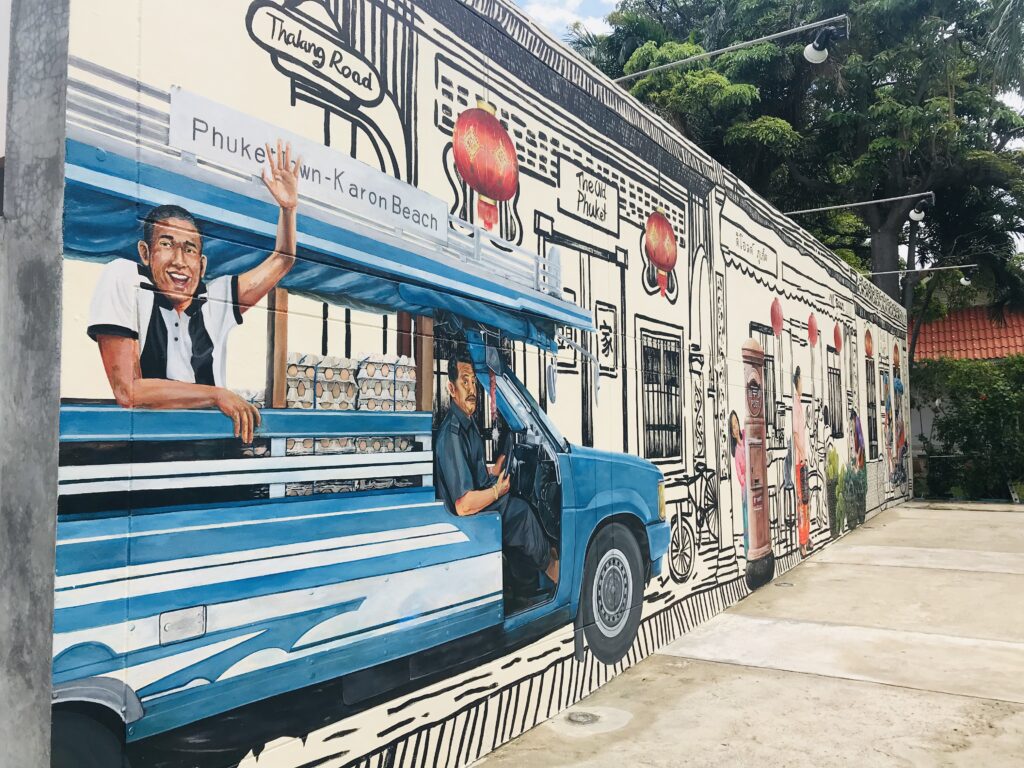
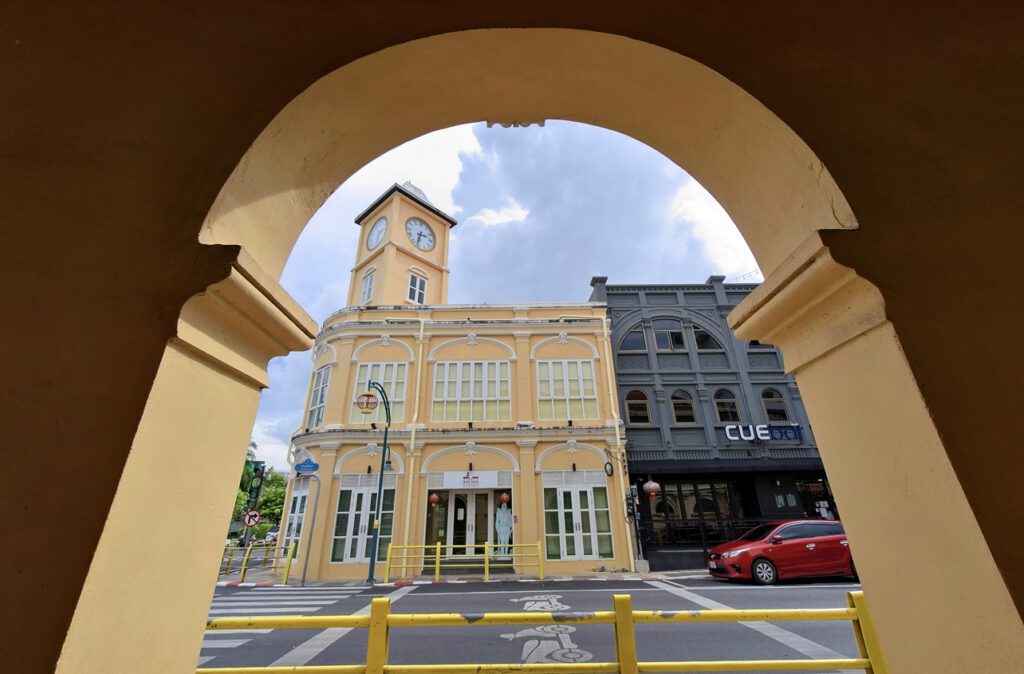
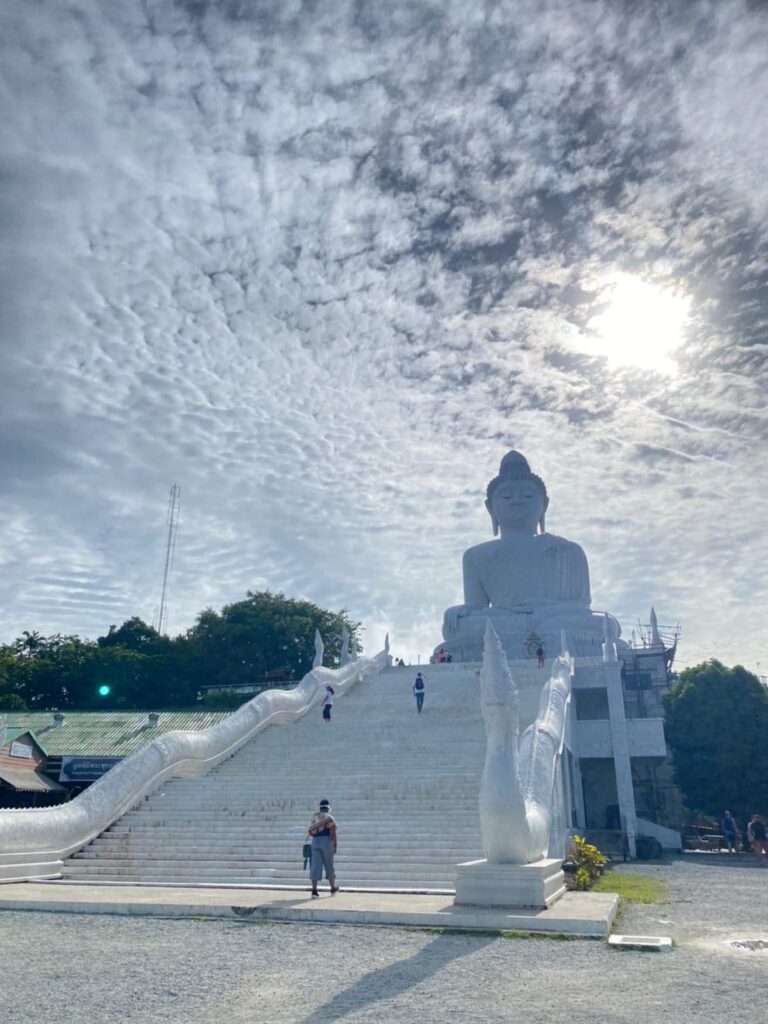
Big Buddha
The Big Buddha in Phuket, also known as the Phra Puttamingmongkol Akenakkiri Buddha, is a 45-meter-tall statue of Buddha located on the top of the Nakkerd Hills between Chalong and Kata. The statue is made of white Burmese marble and can be seen from almost anywhere on the island of Phuket.
The Big Buddha was built in 2004 and has become one of the most popular tourist attractions in Phuket. It is a popular place for tourists and locals alike to visit and pay their respects to Buddha. Visitors can walk up the stairs to the base of the statue and get a close-up view of the intricate details of the statue.
The Big Buddha is a significant religious site for Buddhists in Phuket, and it is common to see people making offerings of incense, flowers, and food at the base of the statue. Visitors are also welcome to make their own offerings and can purchase these items at the souvenir shop located at the base of the statue.
In addition to the main statue, there are also several smaller statues and shrines located on the grounds of the Big Buddha. These include statues of different deities and buddhas, as well as shrines dedicated to loved ones who have passed away.
The views from the top of the Nakkerd Hills where the Big Buddha is located are breathtaking. From the top, visitors can see sweeping views of the surrounding islands and the Andaman Sea. It is a popular spot for tourists to take photographs and enjoy the natural beauty of the area.
The Big Buddha is open to visitors every day from 8:00 am to 5:00 pm. It is free to enter the grounds and all donations go towards maintaining the site and supporting local charities.
In addition to visiting the Big Buddha, there are also several other things to do in the area. Nearby, there is a small temple called Wat Chalong that is worth visiting. The temple is a popular place for locals to pray and make offerings, and it is also a beautiful place to take photographs.
Overall, the Big Buddha in Phuket is a must-see attraction for anyone visiting the island. It is a beautiful and peaceful place that offers stunning views, cultural and religious significance, and plenty of things to do and see in the surrounding area.
Wat Chalong
Wat Chalong Temple, or Wat Chaiyathararam, is one of the most important and visited temples in Phuket. Located in the southeastern part of the island, Wat Chalong is known for its beautiful architecture, rich history, and spiritual significance.
History of Wat Chalong Temple
Wat Chalong Temple was founded in the 19th century by two highly respected monks, Luang Pho Chaem and Luang Pho Chuang. These monks were known for their healing powers, and the temple became a popular destination for people seeking medical treatment and spiritual guidance.
The main hall of the temple, Ho Trai, was built in the early 1900s and is home to several important Buddhist scriptures, including the Phra Trimethi Sutta, which is said to possess magical powers. The temple also has a number of chedis (stupas) and shrines, each of which is dedicated to a different deity or important figure in Buddhist history.
What to See at Wat Chalong Temple
Wat Chalong Temple is a vast complex that covers several acres, and there is plenty to see and explore. Some of the highlights of a visit to Wat Chalong include:
Ho Trai: This is the main hall of the temple, where you’ll find the Phra Trimethi Sutta and other important scriptures. The hall is decorated with intricate carvings and artwork, and it’s a peaceful place to sit and meditate.
Chedis: There are several chedis (stupas) at Wat Chalong Temple, each of which is dedicated to a different deity or important figure in Buddhist history. The largest chedi is the Phra Maha Chedi Si Racha Fan, which stands at the center of the temple complex and is decorated with colorful mosaics.
Shrines: Wat Chalong Temple has several shrines dedicated to different deities, such as the Goddess of Mercy (Kuan Yin), the Medicine Buddha, and the Emerald Buddha. Visitors can light incense and make offerings at these shrines as a way of paying respects and making wishes.
Gardens: The temple grounds are home to a number of beautiful gardens, including a lotus pond, a herb garden, and a fruit orchard. These gardens provide a peaceful and serene setting for visitors to relax and take in the beauty of the temple.
Visiting Wat Chalong Temple
Wat Chalong Temple is open to visitors every day from 8:00am to 5:00pm. There is no entrance fee, but visitors are expected to dress modestly (covering shoulders and knees) and remove their shoes before entering the temple buildings.
If you’re visiting Wat Chalong Temple as part of a tour, you’ll likely have a guide who will explain the history and significance of the temple. If you’re visiting on your own, you can rent an audio guide or pick up a brochure at the entrance to learn more about the temple’s features.
Conclusion
Wat Chalong Temple is a must-visit destination for anyone traveling to Phuket. Its beautiful architecture, rich history, and spiritual significance make it a unique and fascinating place to visit. Whether you’re interested in Buddhism, history, or just want to take in the beauty of the temple, Wat Chalong is well worth a visit.
